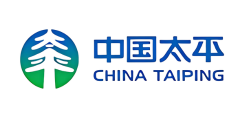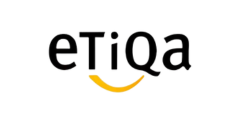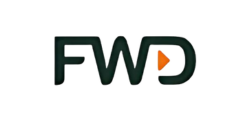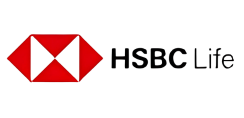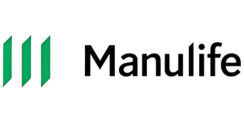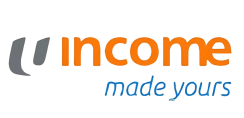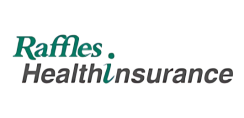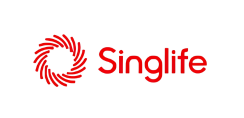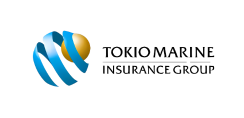
Getting the right financial planning advice in your 20s will greatly impact your long-term financial plans and wealth accumulation goals. By starting right, you reduces the risk and cost of replacing your insurance policies and maximise your overall financial gains.
InterestGuru.sg presents a financial planning guide to the type of insurance and investment related products that you should consider when in your 20s.
In this financial planning guide, you will learn more about:
- Understanding financial planning in your 20s
- Managing your insurance coverage needs
- Managing your wealth accumulation needs
- Implementing your financial portfolio
Financial planning in your 20s
In your early 20s, you are considered to the peak of your vitality with little health conditions (if any). Your income is also likely to be lower as you have just joined the workforce. However, it is also at this period of your life that premiums for insurance coverage are relatively affordable.

The sole reason why your insurance premiums are lower is due to the “risk pooling” nature of insurance plans which spreads insurable risks among all policyholders. As the risk of you getting a major illness is lower, you pay significantly lesser compared to an older individual for the same amount of insurance coverage.
Why you should focus on getting insurance coverage first
It is true that the effects of long term wealth accumulation works best when compounded over a longer time horizon. There is no doubt that by starting early, you gain a heavy advantage over your peers that started later.
However, the insurance premium you need to pay for the same amount of coverage also increases with your age. By setting back your insurance coverage priorities, you face the risk of getting exclusion or additional loading on your insurance premium if you have are struck by a major illness. Furthermore, all the financial gains on your savings will go towards income replacement due to your medical condition.
Managing your insurance coverage needs in your 20s
With limited financial resources, seek to get fully covered for major illness, once you can afford to set aside a regular amount towards an insurance policy. Your first priority should be a regular premium plan that covers provides lifetime insurance coverage.

This regular premium insurance plan should be highly geared towards coverage instead of wealth accumulation. The reason for this is that your savings is unlikely to compound sufficiently to cover any financial disruption in the event of a major illness.
Aim to set aside 15% of your salary (after CPF deduction) to get comprehensive life insurance coverage for:
- Early Critical Illness – 5x of annual expenses
- Critical Illness – 7x of annual expenses
- Total Permanent Disability – 50x of annual expenses
- Hospitalisation and Medical – Via upgrading of MediShield LIFE
Aim to have your insurance coverage as a multiple of your annual expenses. This allows a buffer for you to recover at your own pace, should a major illness strikes.
Related article: How much life insurance coverage do you need in Singapore?
What is the best way to get insurance coverage in your 20s
Get your insurance coverage with the following type of insurance plans:
- Whole Life policy
- Term Life policy
- Investment Linked Policy (ILP)
Key features of whole life insurance plan
Whole Life insurance plan provides lifetime coverage with add-on riders for early critical illness, critical illness and other insurable events. Coverage multiplier or booster can be added to provide higher insurance coverage up to age 70.
- Higher insurance premium compare to a term life
- Insurance premium payable for a limited period
- Guaranteed cash value increase over time for wealth accumulation
Some policies also allow the accumulated cash value to be converted into an annuity plan with regular payout upon the insured reaching a certain age.
Whole life insurance plan is an excellent choice for insurance coverage if the insurance premium is within your financial means. The policy also allows you to accumulate cash value for a lump sum withdrawal in the later years of your life.
Related article: 3 Best Whole Life Policies in Singapore for Insurance Coverage (Updated)
Key features of term life insurance plan
Term Life – Term life policies provide insurance coverage for a fixed period of time and can be used to supplement additional coverage requirement for a limited period of time. As there are no saving or investment elements in such policies, there will be no cash value upon maturity or termination.
- Lower insurance premium compared to a whole life
- Insurance premium payable for lifetime, or until expiry of policy
- No cash value accumulated over time
Term life insurance plan is an great choice for insurance coverage if affordability is an issue in the short term. Term life can also be used to cover the shortfall on your existing insurance policies.
Related article: Term Life or Whole Life – Which is more suitable for you?
Related article: 5 reasons why upgrading MediShield LIFE is your top priority
Key features of Investment Linked Policy
Investment Linked Policy (ILP) consists of both insurance and investment components. Your premiums are used to purchase units in an Investment Linked sub-fund(s) of your choice.
A portion of the units you purchased are then sold to pay for insurance and other charges, while the rest remain invested for wealth accumulation.
- Insurance premium typically payable for a lifetime
- No guaranteed cash value, surrender value based on market value of underlying investment
- Potentially higher wealth accumulation based market value of underlying investment
- Increasing insurance and mortality charges as you age
If you have a higher risk appetite and able to stomach large fluctuations in your investment portfolio, an ILP allows you to build up your investment holdings over a prolong period of time. Any attached insurance coverage and riders are ideally removed before your late 60s as the insurance charges will significantly increases over time,.
Related article: Investment Linked Policies – Are they suitable for you?
Related article: 6 Best Investment Linked Policies in Singapore for Coverage and Wealth Accumulation (Updated)
Managing your wealth accumulation needs in your 20s
The purchasing power of your savings will be reduced over time if you choose to have 100% liquidity and capital guaranteed feature on your money. The “risk-free” interest rate of your bank accounts will never beat the rate of inflation in the economy.

Most financial products for wealth accumulation belong to one of the two categories below:
- Insurance – Products in this category are usually capital guaranteed with a minimum guaranteed rate of financial returns when held to maturity. Part of your savings may be lock-in until the maturity of the insurance plan.
- Investment – Products in this category does not offers any guarantee your capital or rate of returns. Financial gains may be significantly higher or lower depending on the economy outlook and market forces.
After catering for insurance coverage, aim to set aside 20% of your salary (after CPF deduction) towards the goal of wealth accumulation.
Note: You should have at least 6 month of usual expenses kept in a savings/ deposit account for emergency needs.
What is the best way to start wealth accumulation in your 20s
Let the effect of compounding returns work to your advantage by starting low, but early. Whatever possible, try not to have withdrawal from your insurance or investment plans as the overall financial gains will be greatly reduced.
Start your wealth accumulation with the following options:
- Endowment Savings Plans
- Unit Trust Funds
- Exchange Trades Funds
- Stocks and Shares
Key features of Endowment Savings plan
Endowment savings plans offers stable and guaranteed growth on your savings over a period of time. Most savings plans are minimally 100% principal guaranteed upon reaching maturity or by a specific number of years.
Among the features and benefits of an endowment savings plans, you can expect:
- Flexibility on number of years to save for the savings plan
- Selecting the desired years toward the maturity of the savings plan
- Partial withdrawal features and cash coupon payout
How much investment risks are you exposed in an endowment savings plan?
- Rate of financial returns: Low
- Risk on principal investment: Very low (When held to maturity)
- Holding period: Mid to Long-term
Related article: 4 Best Endowment Savings Plans for Wealth Accumulation (Updated)
Related article: 3 Best Endowment Savings Plans for Lifetime Wealth Accumulation (Updated)
Key features of Unit Trust Funds
Unit Trust Funds are investment products actively managed by professional fund management companies. As an investor, your money is pooled or combined with money from other investors and invested according to the fund’s investment objective.
With asset under management easily in the millions, the pooled funds is managed by a team of fund managers, analysts and other financial professionals. This allows wider access to funds/ investment in equities, bonds, commodities or other assets classes that you otherwise might not have access to on your own.
Among the features and benefits of unit trust funds, you can expect:
- Significantly higher financial gains than traditional banking and saving plans in the long run
- Assets that are analysed and managed by professionals
- Higher volatility on your principal investment during market cycles
- No guaranteed returns on your capital or dividend
In your 20s, seek to invest in growth funds with a high allocation to equities as such funds may potentially offers the highest financial returns in the long run.
How much investment risks are you exposed in Unit Trust Funds?
- Rate of financial returns: Average/ High
- Risk on principal investment: Average
- Holding period: Mid/ Long-term
Related article: 4 reasons to invest in Unit Trust Funds
Key features of Exchange Traded Funds
An Exchange Traded Fund (ETF) tracks and replicate the underlying index as closely as possible. The fund is passively managed and its performance is dependent on market movement and sentiments.
As the investor has to make more decisions and manage his investment portfolio, the fees and charges involved are lower, compared to investing in a Unit Trusts. Due to the lower fees that is charged by an ETF, certain amount of financial knowledge and market updates may be required to successfully make investment decisions.
Among the features and benefits of ETFs, you can expect:
- Significantly higher financial gains than traditional banking and saving plans in the long run
- No actively management of underlying assets
- Higher volatility on your principal investment during market cycles
- No guaranteed returns on your capital or dividend
As an ETFs allocates its pooled resources according to the underlying index, the main objective is to achieve returns similar to market movement. Your financial gains will be based on the overall performance of the index.
How much investment risks are you exposed in ETFs?
- Rate of financial returns: Average/ High
- Risk on principal investment: Average/ High
- Holding period: Long-term
Related article: Unit Trust Funds or ETFs – Which is suitable for you?
Key features of Stocks and shares
By being a shareholding in a company, you reap the benefits of the company’s successes in the form of increased stock valuation. Similarly, the poor performance of the company will decrease it stock valuation, resulting in a loss for you, as a share holder.
Holding for the long term may not always translate into positive returns. For every Facebook and Amazon, there are a lot more companies that goes under. Even local heavyweights can get into restructuring woes, such as:
- Noble Group (Former component in Straits Times Index) drop from S$12.05 (2015) to S$0.12 (2023)
- Hyflux Ltd drop from $2.15 USD to $0.05 USD
Among the features and benefits of stocks and shares, you can expect:
- Significantly higher financial gains than traditional banking and saving plans in the long run
- Higher volatility on your principal investment during market cycles
- Prepared to lose a significant portion of your principal investment
- No guaranteed returns on your capital or dividend
How much investment risks are you exposed in stocks and shares?
- Rate of financial returns: High
- Risk on principal investment: Very High
- Holding period: No fixed holding period
Seek to diversify your investment risk by spreading out your funds into multiple investment instruments to reduce the risk of putting all your eggs in the same basket.
Implementing your financial portfolio in your 20s
Making sure that you start right on your financial planning will allow you to maximise your future wealth gains. Have an idea of your financial goals and how can realistically work towards achieving them.
Ask yourself the following questions for the savings that your wish to set aside for your financial goals:
- Time horizon – How long can you let your savings stay untouched and when will you required the funds?
- Risk profile – How much risk and price fluctuation on your principal investment are you willing to take?
- Financial budget – Is the amount you are setting aside every month for regular financial plans already above 50% of your income?
Aim to have the financial discipline to set aside a regular sum towards your financial goals. Delaying your financial planning due to not having a budget will have a heavy cost to your finances in the long run.
Related article: 3 things to consider before taking a new financial product
Find out about suitable financial products
Contact Us!
Or Whatsapp us to let a licensed financial adviser work out a proposal at no cost to you.
All financial reviews and proposals provided are 100% free of charge. There will be no obligation to take up any proposed financial products or services in any way.
We compare quotations head to head on all leading insurers in Singapore
Our Partners

Our Partners

